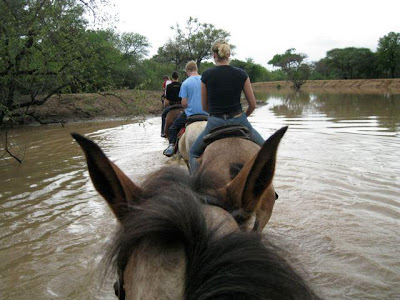

Adventures of a Dutch wildlife veterinarian living and working in the African bush. Avonturen van een Nederlandse wildlife dierenarts in de Afrikaanse bush.




 This is Teddy, a baboon orphan. He lives in CARE, a rehabilitation centre for orphaned, injured, abused and traumatised chacma baboons(www.primatecare.org.za). Accidently he fell and could not use his right leg afterwards. Under general anaesthetics he was examined and X-rays showed that his right femur was broken. A cast was applied and must be in place for 6 weeks. In the moment he is happy, comfortable and tolerates the cast very well. In 3 weeks time we will repeat the X-rays to see whether the bone is healing.
This is Teddy, a baboon orphan. He lives in CARE, a rehabilitation centre for orphaned, injured, abused and traumatised chacma baboons(www.primatecare.org.za). Accidently he fell and could not use his right leg afterwards. Under general anaesthetics he was examined and X-rays showed that his right femur was broken. A cast was applied and must be in place for 6 weeks. In the moment he is happy, comfortable and tolerates the cast very well. In 3 weeks time we will repeat the X-rays to see whether the bone is healing.



 ino calf was found without his mother in a private game reserve. He was in a very bad condition: emanciated, dehydrated, weak, anemic and covered in ticks. His mother probably left him because he was too weak to follow her. Without the protection of his mother and without any treatments he would for sure die within a few days. The prognosis of wild animals in such bad condition is always poorly, but of course everything was tried to try to safe the life of this wonderful animal.
He was darted and all possible treatments to improve his condition were administred: IV fluids, antibiotics, anti-inflammation, anti-parasite and anti-tick treatments, painkillers and multi-vitamins. He also got a long-acting tranquilliser to reduce the stress in this completely wild and undoubtly traumatised baby.
ino calf was found without his mother in a private game reserve. He was in a very bad condition: emanciated, dehydrated, weak, anemic and covered in ticks. His mother probably left him because he was too weak to follow her. Without the protection of his mother and without any treatments he would for sure die within a few days. The prognosis of wild animals in such bad condition is always poorly, but of course everything was tried to try to safe the life of this wonderful animal.
He was darted and all possible treatments to improve his condition were administred: IV fluids, antibiotics, anti-inflammation, anti-parasite and anti-tick treatments, painkillers and multi-vitamins. He also got a long-acting tranquilliser to reduce the stress in this completely wild and undoubtly traumatised baby.